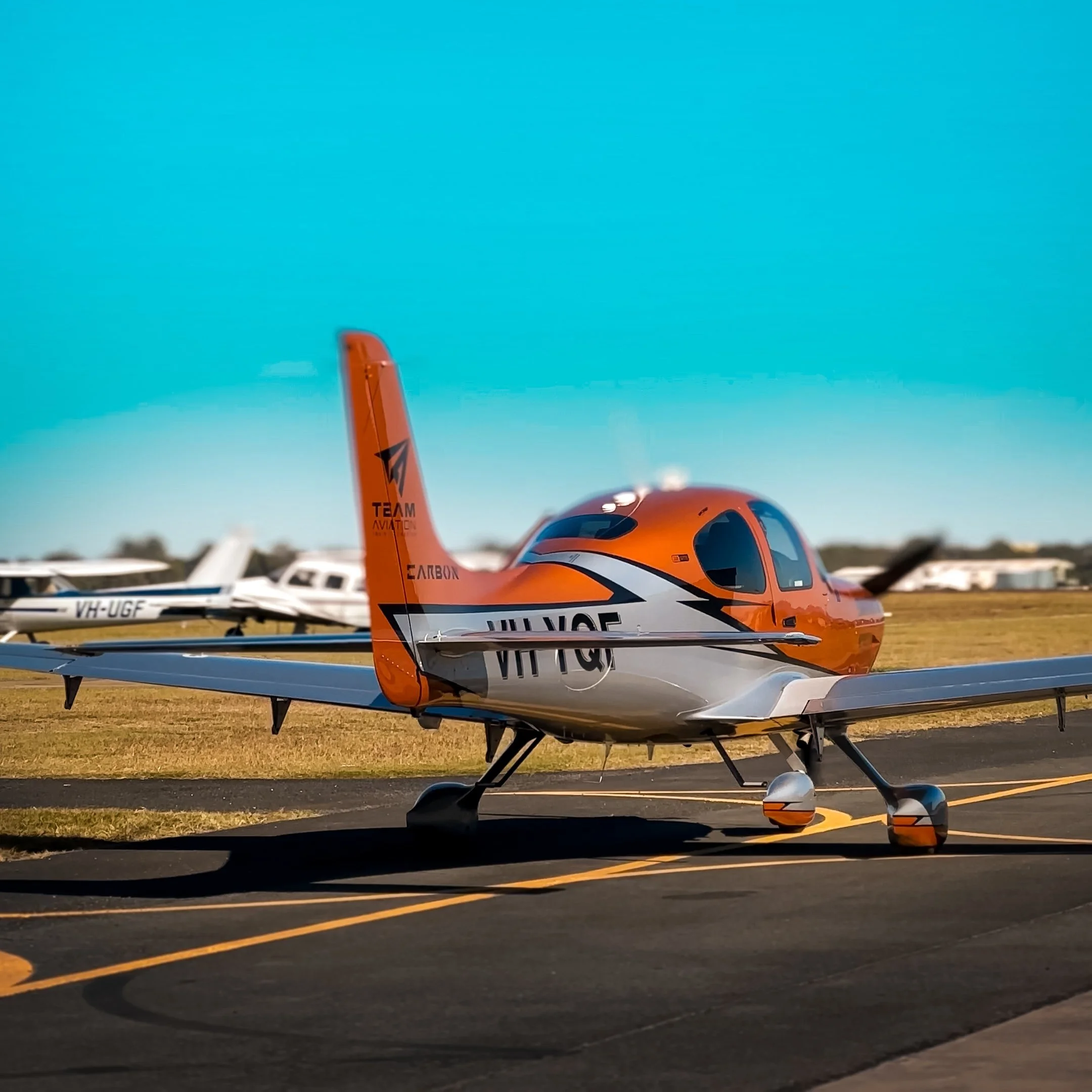 Image 1 of 3
Image 1 of 3

 Image 2 of 3
Image 2 of 3

 Image 3 of 3
Image 3 of 3




Navigation Techniques for VFR Pilots – 2 October 2024
Navigation Techniques for VFR Pilots
Recording will be provided and is accessible for 30 days.
Date: 2 October 2024
Time: 1800 - 2000 AEST
Duration: 2 Hours
Location: Online (Webinar)
Overview
Elevate your Visual Flight Rules (VFR) navigation skills with our in-depth webinar, designed for both new and seasoned pilots. Whether you're refining your current techniques or looking to master new ones, this session will provide you with the knowledge and confidence to navigate safely and efficiently.
What You’ll Learn:
Core Navigation Principles: Refresh your understanding of VFR navigation, including map reading, compass use, and time-distance calculations.
Advanced Techniques: Explore complex navigation strategies such as diversion planning and handling unexpected weather conditions.
Integrating Technology: Discover how to effectively combine modern GNSS technology with traditional navigation methods for enhanced safety.
Practical Case Studies: Examine real-world scenarios to learn how to tackle challenges in VFR navigation.
Topics Covered
Introduction to VFR Navigation:
Overview of Visual Flight Rules (VFR) and their importance.
Map and Chart Reading Techniques:
Understanding aeronautical charts, including symbols and legends.
Interpreting terrain features, airspace boundaries, and restricted areas.
Time-Distance Calculations:
How to accurately calculate time en route based on speed, distance, and wind factors.
Using these calculations for flight planning and fuel management.
Diversion Planning:
Techniques for planning and executing diversions in response to changing weather, airspace restrictions, or other unexpected events.
Real-time decision-making skills during diversions.
Weather and Navigation:
Understanding how weather impacts VFR navigation.
Strategies for dealing with reduced visibility, changing winds, and other weather-related challenges.
GPS and Modern Navigation Tools:
How to effectively use GPS and other modern avionics in conjunction with traditional navigation techniques.
Pros and cons of relying on technology versus traditional methods.
Scenario-Based Learning:
Case studies of real-world navigation scenarios, including successful outcomes and lessons learned from mistakes.
Interactive scenarios where participants can make decisions and discuss potential outcomes.
Airspace Awareness:
Understanding different classes of airspace and their requirements.
Techniques for maintaining situational awareness and avoiding airspace infringements.
Practical Tips and Tricks:
Techniques for maintaining accurate navigation logs.
Efficient cockpit organisation to streamline navigation tasks.
Who Should Attend:
This webinar is perfect for private pilots, student pilots, and aviation enthusiasts who wish to sharpen their navigation skills and be fully prepared for any situation in the air.
Why Attend?
Expert Instruction: The session is led by an experienced Grade 1 instructor with extensive VFR flying experience.
Interactive Q&A: Have your specific questions answered in real-time.
Practical Insights: Gain practical tips and techniques that you can immediately apply in your flights.
Navigation Techniques for VFR Pilots
Recording will be provided and is accessible for 30 days.
Date: 2 October 2024
Time: 1800 - 2000 AEST
Duration: 2 Hours
Location: Online (Webinar)
Overview
Elevate your Visual Flight Rules (VFR) navigation skills with our in-depth webinar, designed for both new and seasoned pilots. Whether you're refining your current techniques or looking to master new ones, this session will provide you with the knowledge and confidence to navigate safely and efficiently.
What You’ll Learn:
Core Navigation Principles: Refresh your understanding of VFR navigation, including map reading, compass use, and time-distance calculations.
Advanced Techniques: Explore complex navigation strategies such as diversion planning and handling unexpected weather conditions.
Integrating Technology: Discover how to effectively combine modern GNSS technology with traditional navigation methods for enhanced safety.
Practical Case Studies: Examine real-world scenarios to learn how to tackle challenges in VFR navigation.
Topics Covered
Introduction to VFR Navigation:
Overview of Visual Flight Rules (VFR) and their importance.
Map and Chart Reading Techniques:
Understanding aeronautical charts, including symbols and legends.
Interpreting terrain features, airspace boundaries, and restricted areas.
Time-Distance Calculations:
How to accurately calculate time en route based on speed, distance, and wind factors.
Using these calculations for flight planning and fuel management.
Diversion Planning:
Techniques for planning and executing diversions in response to changing weather, airspace restrictions, or other unexpected events.
Real-time decision-making skills during diversions.
Weather and Navigation:
Understanding how weather impacts VFR navigation.
Strategies for dealing with reduced visibility, changing winds, and other weather-related challenges.
GPS and Modern Navigation Tools:
How to effectively use GPS and other modern avionics in conjunction with traditional navigation techniques.
Pros and cons of relying on technology versus traditional methods.
Scenario-Based Learning:
Case studies of real-world navigation scenarios, including successful outcomes and lessons learned from mistakes.
Interactive scenarios where participants can make decisions and discuss potential outcomes.
Airspace Awareness:
Understanding different classes of airspace and their requirements.
Techniques for maintaining situational awareness and avoiding airspace infringements.
Practical Tips and Tricks:
Techniques for maintaining accurate navigation logs.
Efficient cockpit organisation to streamline navigation tasks.
Who Should Attend:
This webinar is perfect for private pilots, student pilots, and aviation enthusiasts who wish to sharpen their navigation skills and be fully prepared for any situation in the air.
Why Attend?
Expert Instruction: The session is led by an experienced Grade 1 instructor with extensive VFR flying experience.
Interactive Q&A: Have your specific questions answered in real-time.
Practical Insights: Gain practical tips and techniques that you can immediately apply in your flights.
Navigation Techniques for VFR Pilots
Recording will be provided and is accessible for 30 days.
Date: 2 October 2024
Time: 1800 - 2000 AEST
Duration: 2 Hours
Location: Online (Webinar)
Overview
Elevate your Visual Flight Rules (VFR) navigation skills with our in-depth webinar, designed for both new and seasoned pilots. Whether you're refining your current techniques or looking to master new ones, this session will provide you with the knowledge and confidence to navigate safely and efficiently.
What You’ll Learn:
Core Navigation Principles: Refresh your understanding of VFR navigation, including map reading, compass use, and time-distance calculations.
Advanced Techniques: Explore complex navigation strategies such as diversion planning and handling unexpected weather conditions.
Integrating Technology: Discover how to effectively combine modern GNSS technology with traditional navigation methods for enhanced safety.
Practical Case Studies: Examine real-world scenarios to learn how to tackle challenges in VFR navigation.
Topics Covered
Introduction to VFR Navigation:
Overview of Visual Flight Rules (VFR) and their importance.
Map and Chart Reading Techniques:
Understanding aeronautical charts, including symbols and legends.
Interpreting terrain features, airspace boundaries, and restricted areas.
Time-Distance Calculations:
How to accurately calculate time en route based on speed, distance, and wind factors.
Using these calculations for flight planning and fuel management.
Diversion Planning:
Techniques for planning and executing diversions in response to changing weather, airspace restrictions, or other unexpected events.
Real-time decision-making skills during diversions.
Weather and Navigation:
Understanding how weather impacts VFR navigation.
Strategies for dealing with reduced visibility, changing winds, and other weather-related challenges.
GPS and Modern Navigation Tools:
How to effectively use GPS and other modern avionics in conjunction with traditional navigation techniques.
Pros and cons of relying on technology versus traditional methods.
Scenario-Based Learning:
Case studies of real-world navigation scenarios, including successful outcomes and lessons learned from mistakes.
Interactive scenarios where participants can make decisions and discuss potential outcomes.
Airspace Awareness:
Understanding different classes of airspace and their requirements.
Techniques for maintaining situational awareness and avoiding airspace infringements.
Practical Tips and Tricks:
Techniques for maintaining accurate navigation logs.
Efficient cockpit organisation to streamline navigation tasks.
Who Should Attend:
This webinar is perfect for private pilots, student pilots, and aviation enthusiasts who wish to sharpen their navigation skills and be fully prepared for any situation in the air.
Why Attend?
Expert Instruction: The session is led by an experienced Grade 1 instructor with extensive VFR flying experience.
Interactive Q&A: Have your specific questions answered in real-time.
Practical Insights: Gain practical tips and techniques that you can immediately apply in your flights.











